March 5, 2022
The days lengthen and the heartbeat of my yard cues me to a change. My calendar of birds turns a page. An uptick in hummingbirds. The single Anna’s of winter has become six, males pairing to females, the latter of which take a sudden interest in the shaggy lint clothespinned to the line.
Five days ago, the first rufous hummingbird—a female on her way from central Mexico to nesting grounds in the Pacific Northwest, British Columbia, or southern Alaska—arrived at the feeders to harass the Anna’s. So feisty for her puny size. Two days later, a broad-tailed hummingbird (a male) joined them. Then, a female broad-billed, her curved magenta bill tipped with cotton fibers.
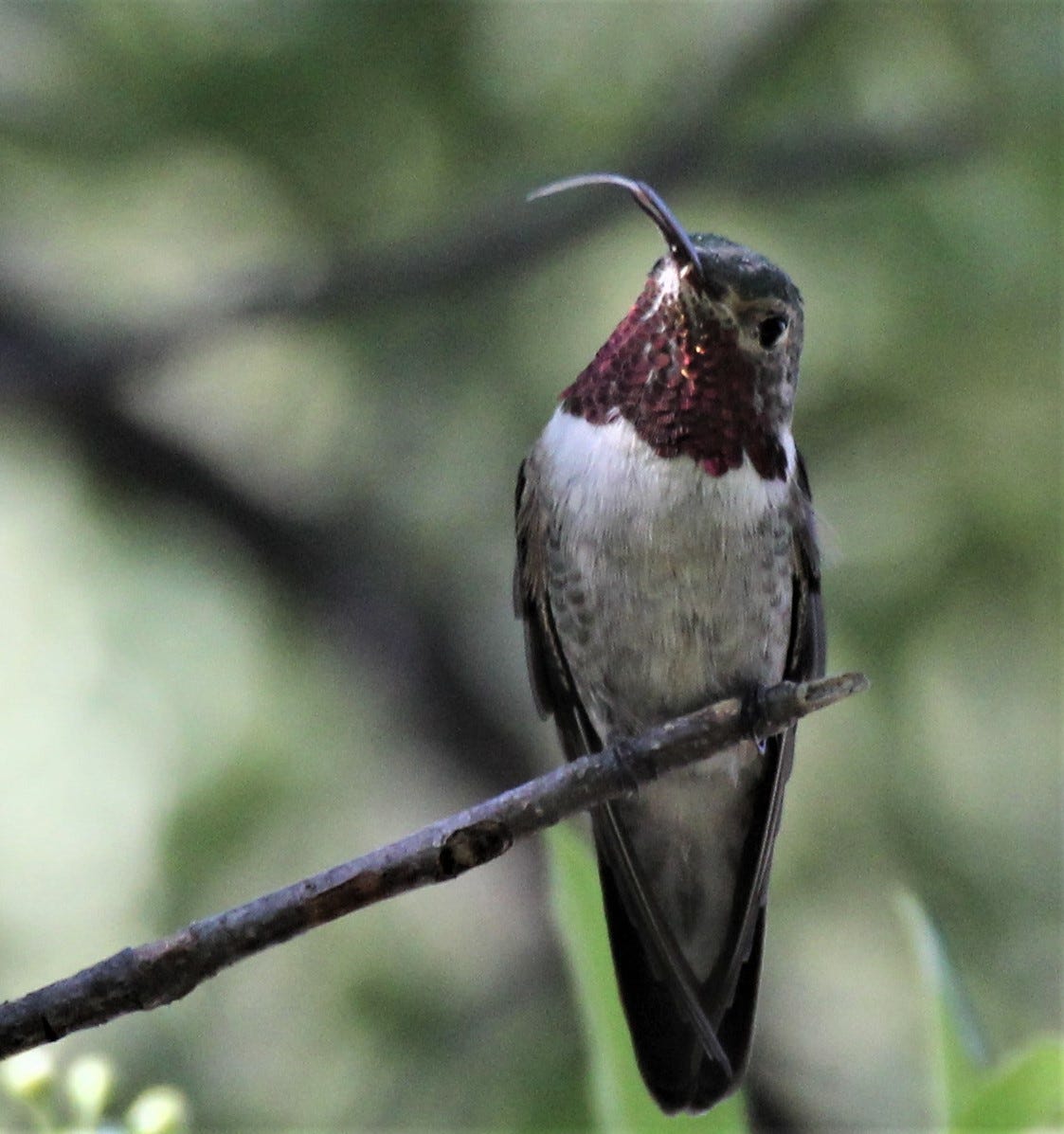
Taking a vector from their flight paths, I search the trees for hummingbird nests. Mostly unsuccessfully. This is not a needle in a haystack. More like a cotton ball in a snowstorm. Hummingbirds build tiny nests of willow leaves and grasses and feathers, bound together with spiderwebs or unspooled cocoons, and camouflaged among the oak leaves with lichens and mosses.
Like a hacky sack in a hayfield. Like hope.



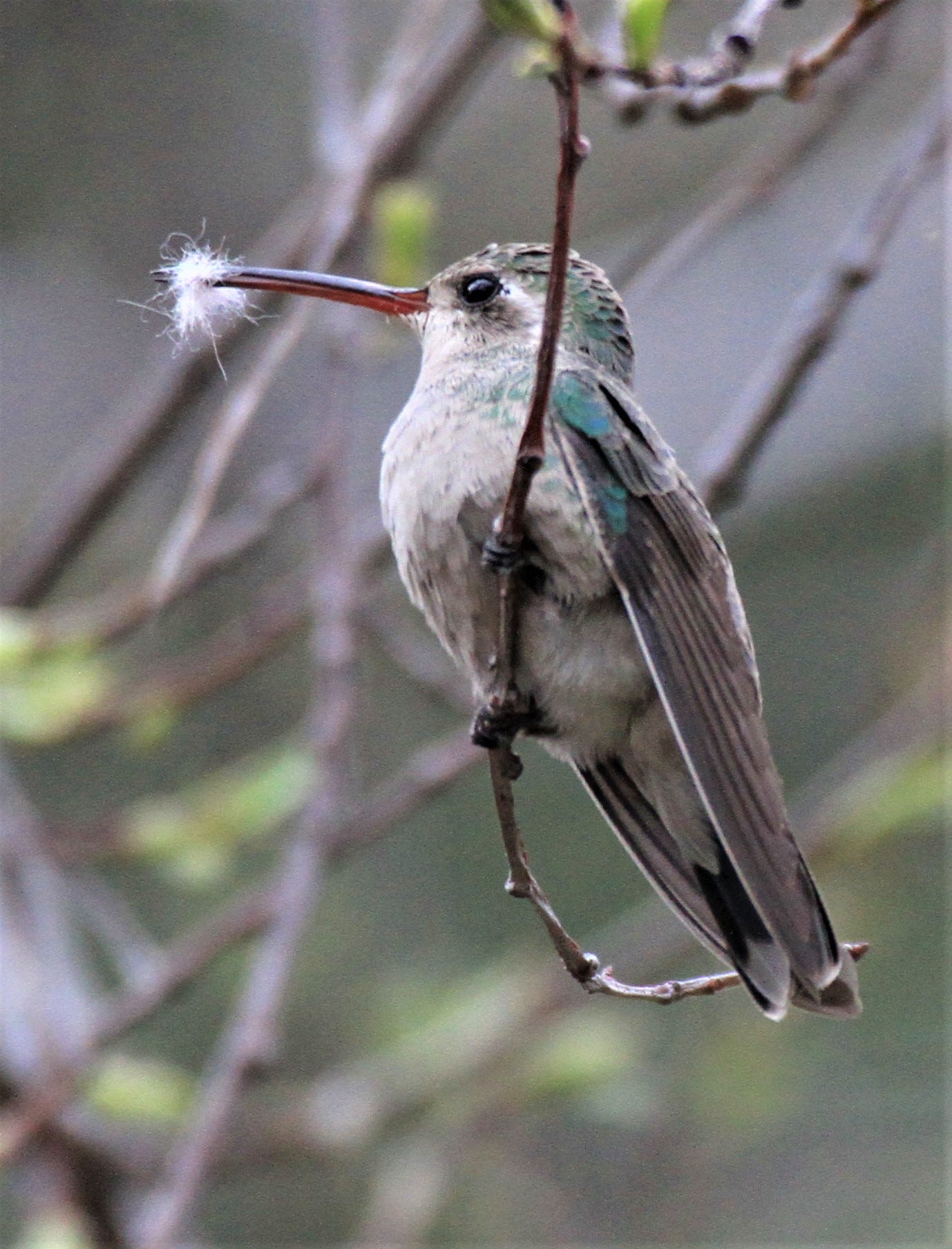
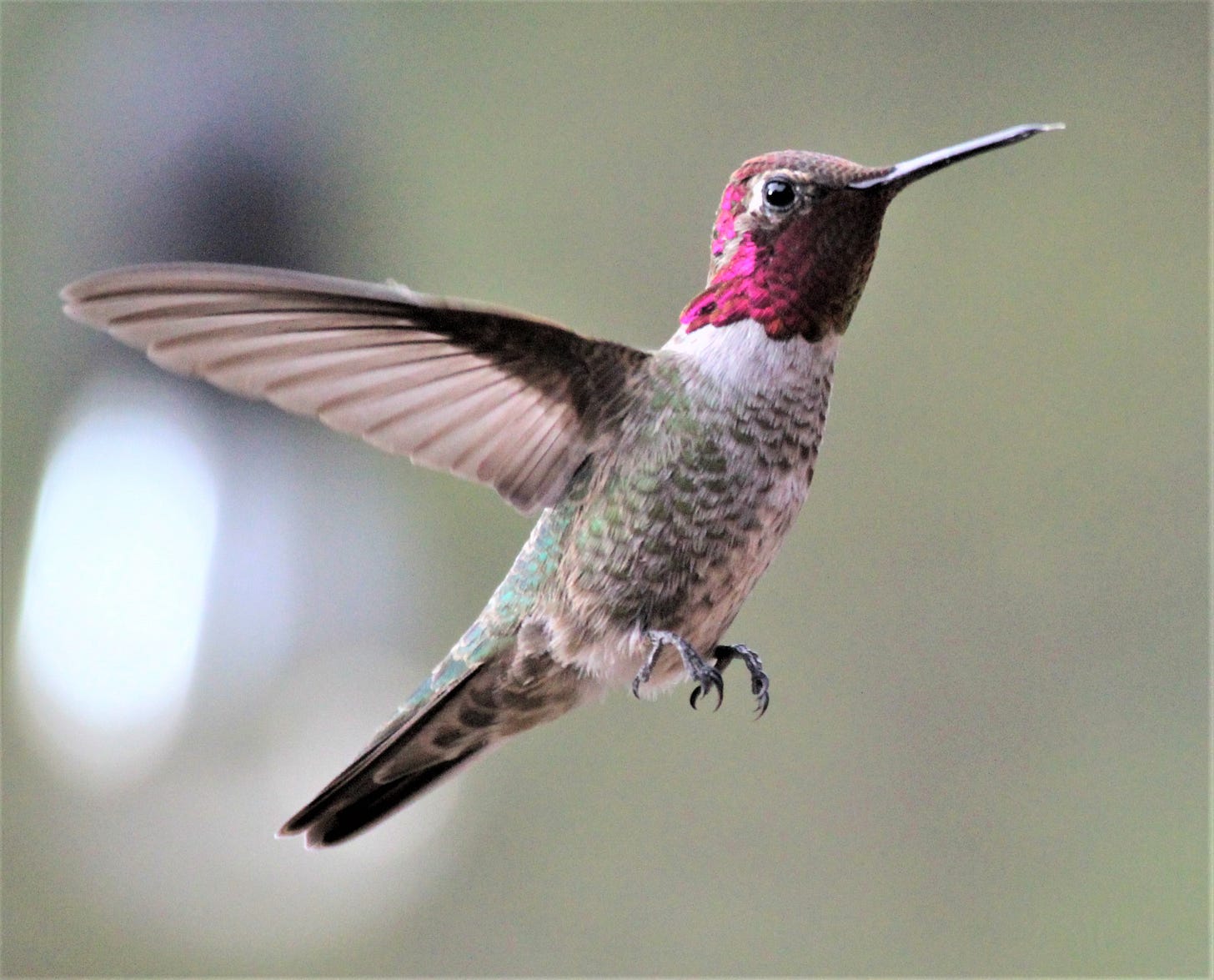
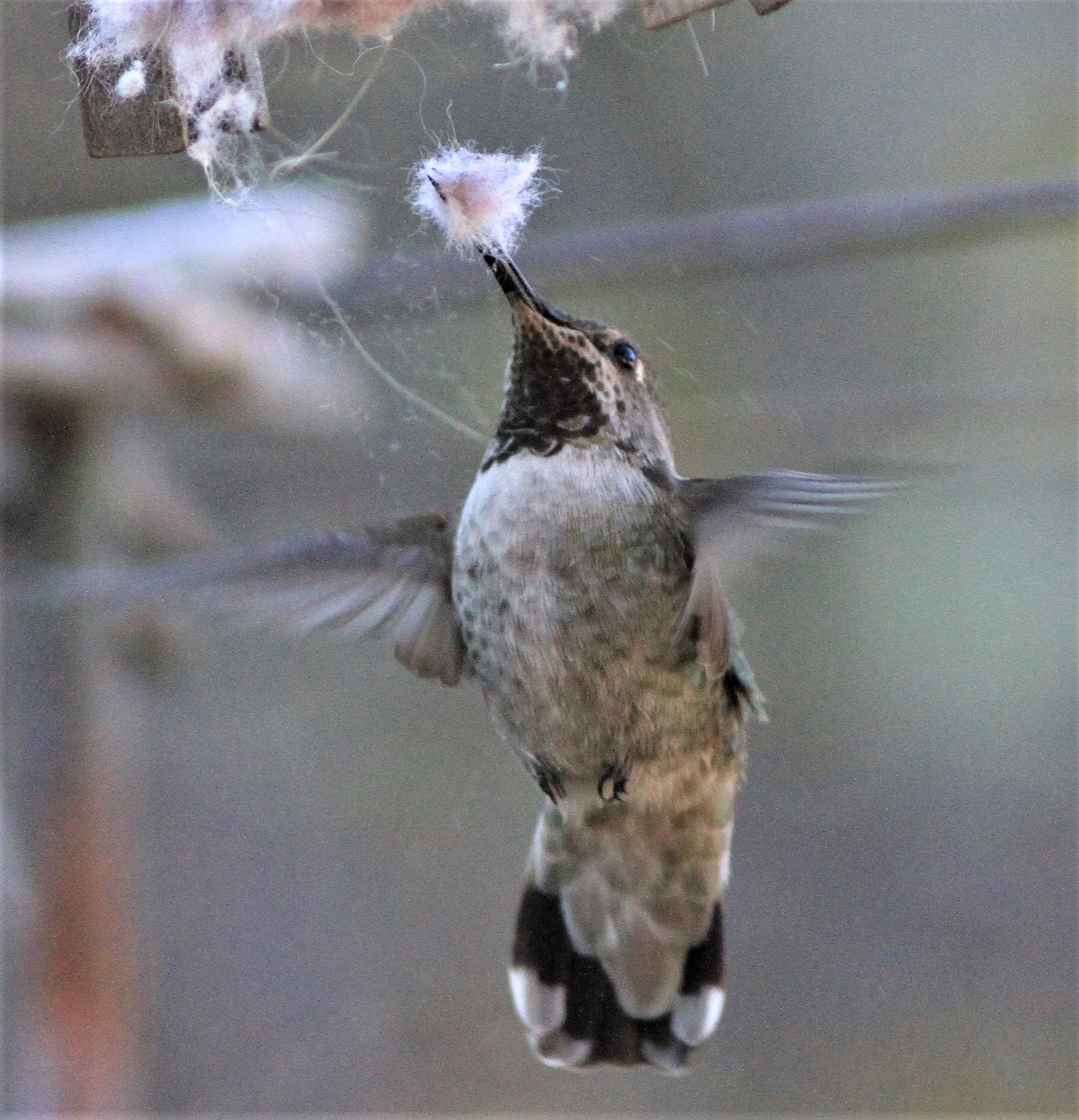
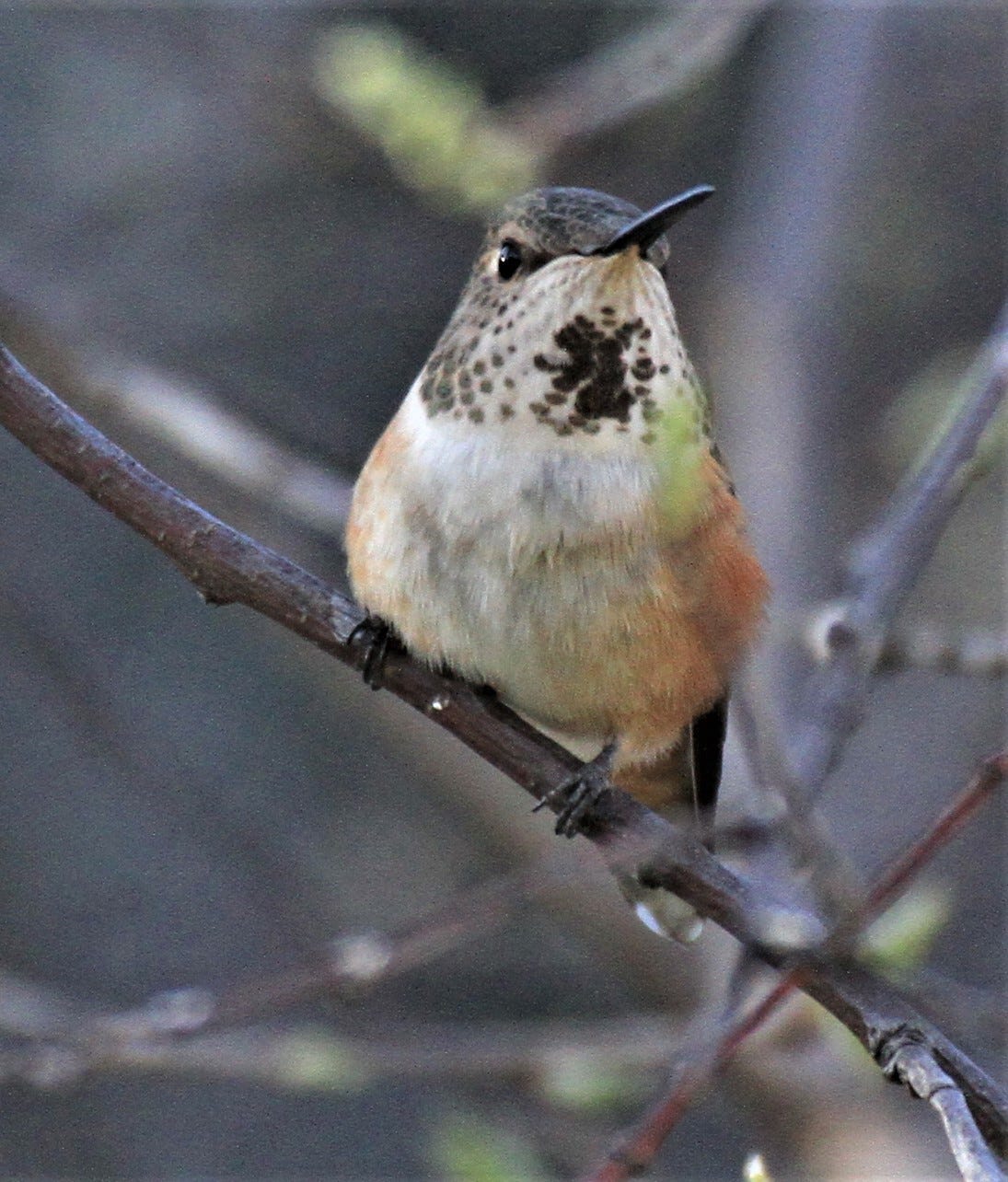
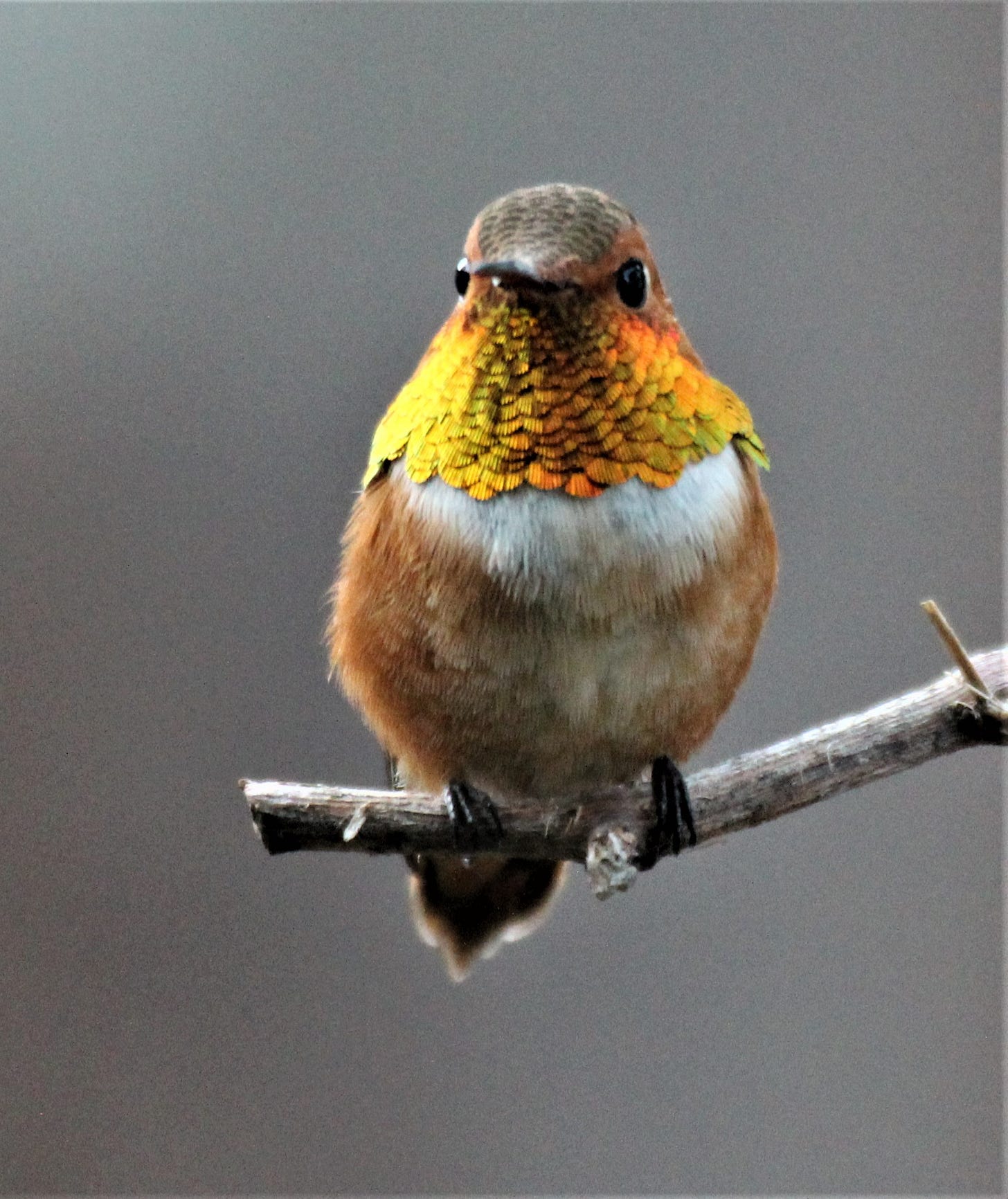
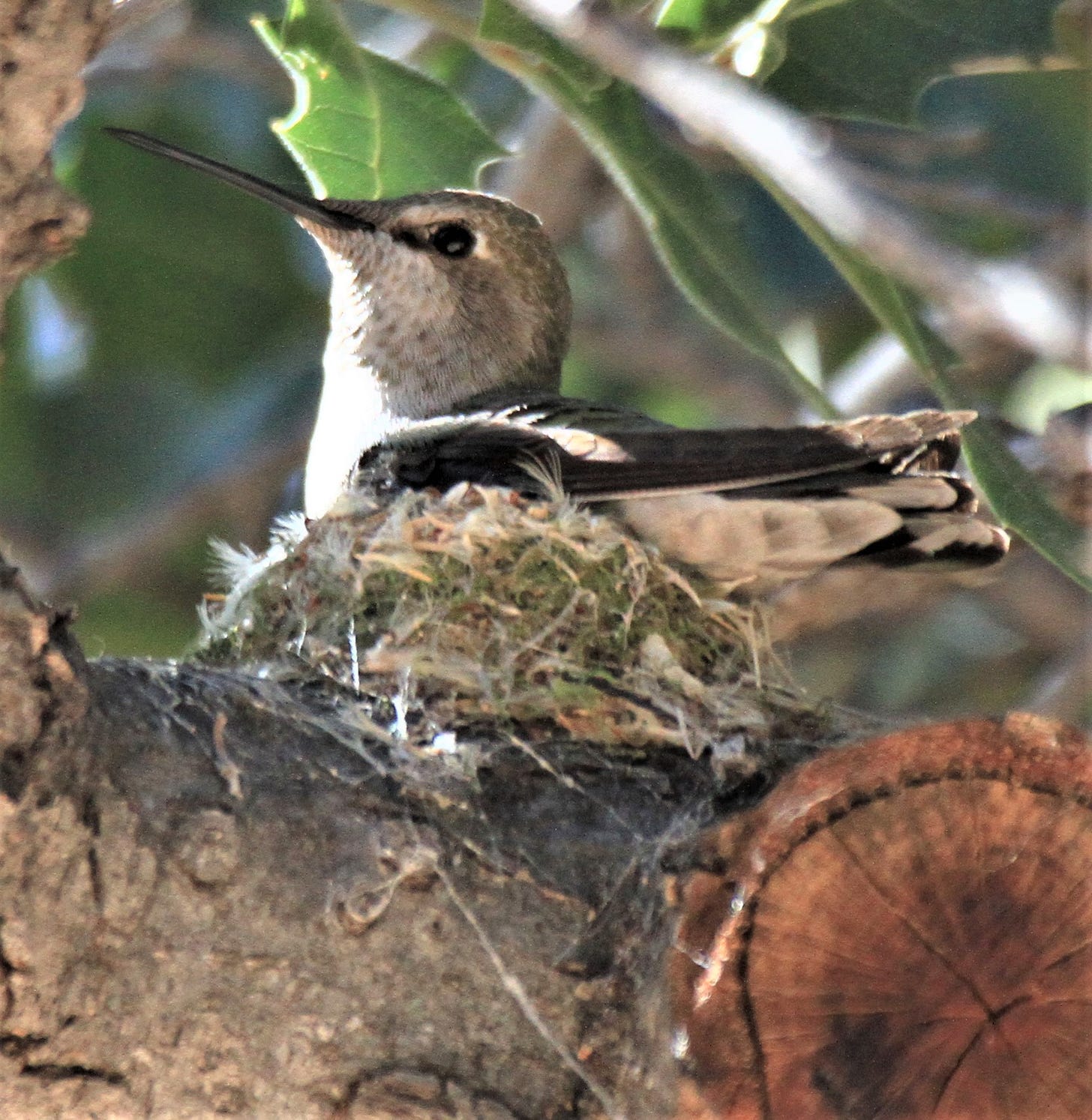
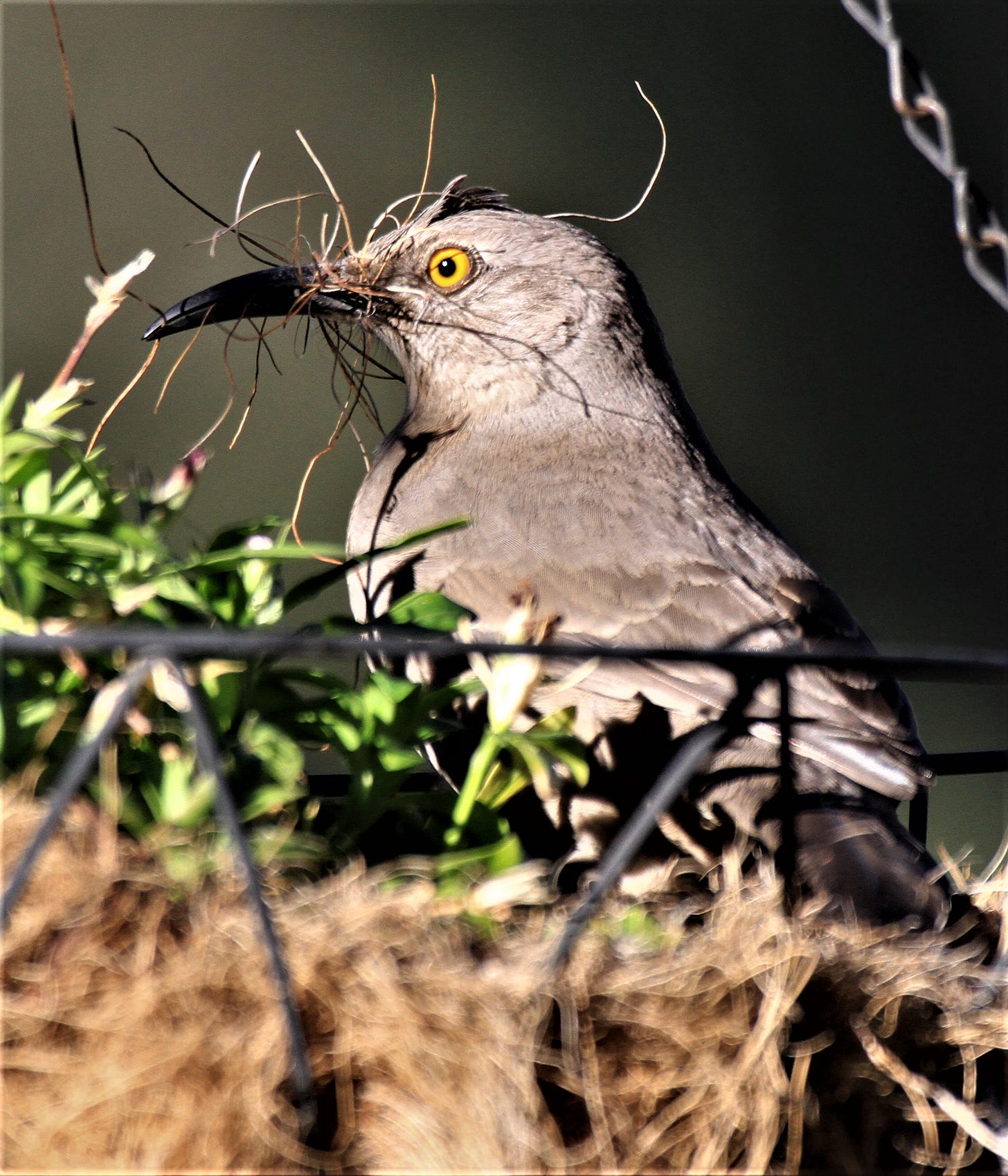
When we went up to the White Mountains back in the day, I used to set up three feeders on the raised porch of the cabin and watch the fun. They would zoom in by the dozens. Of course if there was a Rufous female, she ruled, determining who got to eat and where. The only time I saw her back off was when one of the big Rivoli's (then called Magnificent, I think) would come in, the Rufous would grudgingly allow it to feed as it wanted to. I called it all "Bird Wars": with 'Tan Solo', 'Dark Invader' and 'Like Flywalker'. Sitting just a few feet from the feeders, the various hummers would use me as a place to hide behind and sometimes they would land on me if I was quiet enough.
So wonderful all the hummingbirds!